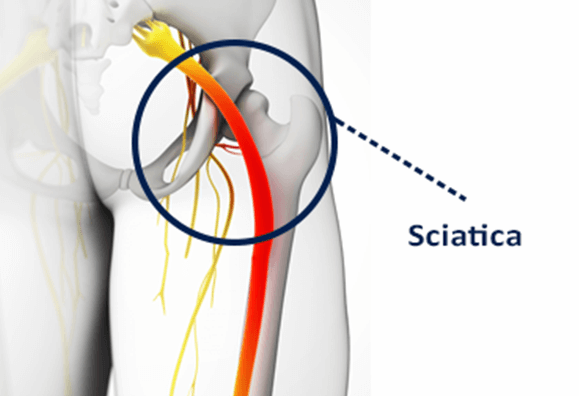This blog is excerpted from a Spine-Health.com article by Kevin Ju, MD, written on June 4, 2020.
Many people find that surgery provides effective relief from their painful sciatica symptoms. The type of surgery that is recommended can vary considerably and will depend on the underlying cause of sciatica. Having surgery for sciatica is typically elective, which means it is the patient’s decision whether or not to have surgery.
Do I need surgery for my sciatica symptoms?
Surgery may be required when sciatica is caused by serious underlying conditions, such as cauda equina syndrome, tumors, infections, or severe lumbar disc herniation. Surgical treatment of these conditions helps preserve leg function and improves the quality of life.
In other cases, surgery may be an option to consider, such as when:
- Leg and/or foot pain is severe and accompanied by progressive neurological symptoms, such as weakness and/or numbness
- Different combinations of nonsurgical treatment options have been tried, including physical therapy, oral medications, and injections
- Leg functionality is significantly limited—for example, performing daily household activities and/or occupation-related activities is considerably impaired
Unless treating a medical emergency, surgery is typically considered after 6 to 8 weeks of nonsurgical treatments are tried.
What surgical options do I have for treating sciatica?
Several lower back conditions can cause sciatica, with many corresponding types of surgeries. For example, a pinched nerve root may be treated in several different ways depending on the location and causes of the impingement.
Common surgical procedures for sciatica include:
- Microdisectomy
- In this surgery, a small part of the disc material (with or without the adjacent bone) is taken out to relieve nerve root compression.
- Lumbar decompression. Pressure on nerve roots may be relieved by:
- Laminectomy
- Part or all of the lamina (posterior part of the vertebra) is removed in order to provide more room for the spinal nerves.
- Foraminotomy
- The neuroforamina (bony openings for spinal nerves) are enlarged by trimming the overgrown bone, providing more space for the nerve roots as they exit the spinal canal.
- Laminectomy
What’s the typical long-term outlook after sciatica surgery?
If you are considering surgery for your sciatica symptoms, your doctor can help understand the available options and possible outcomes. A doctor can also provide guidance on the appropriate timing for surgery and if nonsurgical options need to be considered beforehand.
In addition to the type and severity of the underlying cause, the outcome of a surgical procedure also depends on other factors, such as age, smoking, and previous history of sciatica.
Find A Fast Recovery After The Bonati Spine Procedures For Sciatica
Due to the smaller incision causing less damage to the tissues surrounding the spine, the Bonati Spine Procedures have a shorter, much less painful recovery. After a few days, office workers can return to work. For more active jobs, a return to full-time work is usually achieved after a few weeks. These are estimates as every patient recovers at a different rate, but significantly shorter than the recovery time for traditional open back surgery, which can take 3 months or longer. The success rate for sciatica at the Bonati Spine Institute is very high. The Bonati Spine Institute has achieved a 98.75% patient reported satisfaction rate. Learn more about how we may be able to help treat your sciatica pain by calling us at 855-267-0482 or complete our online contact form here.
Read the full Spine-Health.com article here: https://www.spine-health.com/blog/why-surgery-sciatica-not-one-size-fits-all

